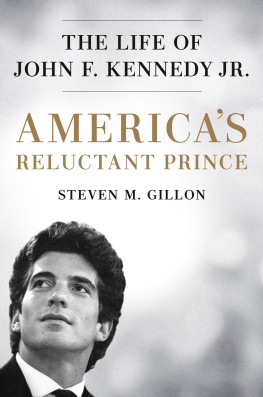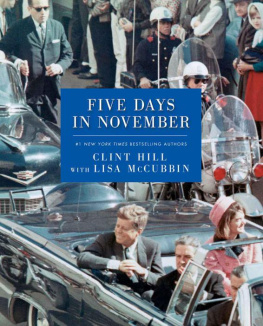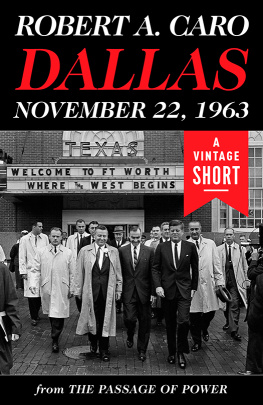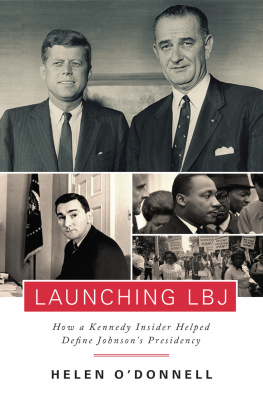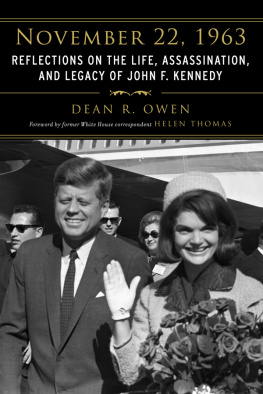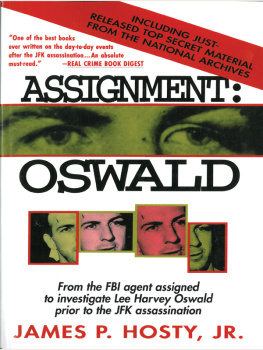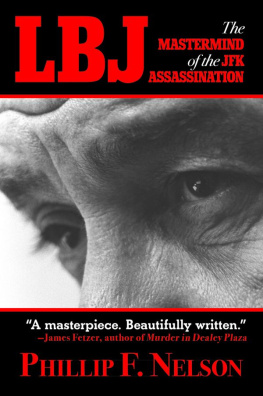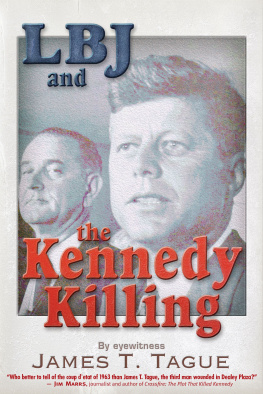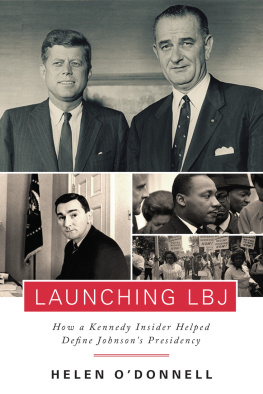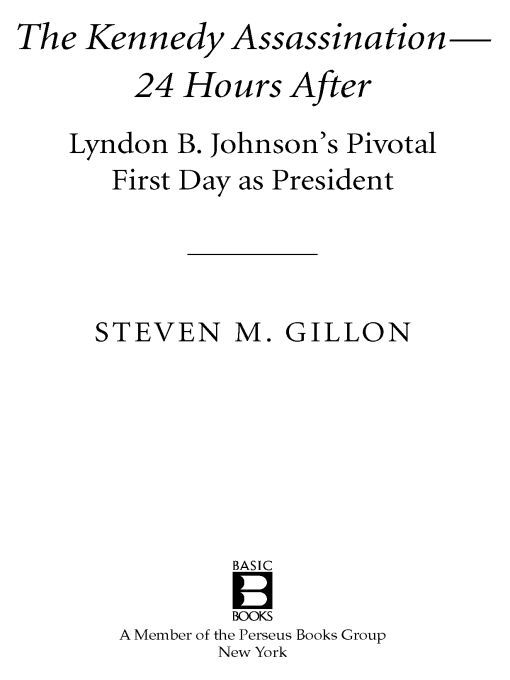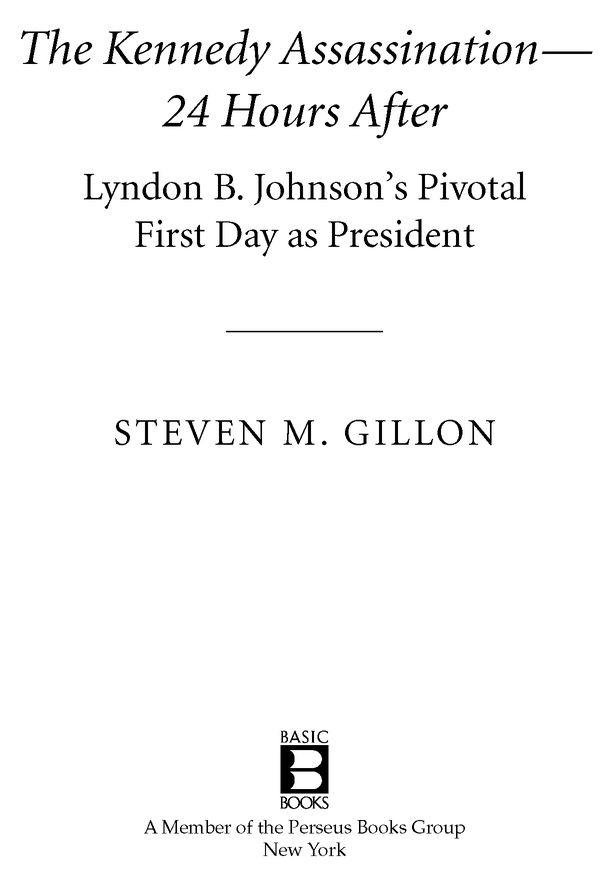Table of Contents
This book is dedicated to
the honorable David L. Boren
Preface
President John F. Kennedy has now been dead for more years than he lived, yet his assassination on November 22, 1963, remains one of the most misunderstood events in American history despite being one of the most well documented. Hundreds of people were gathered in Dealey Plaza in Dallas, Texas, at the time of the shooting. Dozens of reporters and Secret Service agents were traveling with the president, filing reports on what they saw and heard. The same television cameras that helped to forge such a strong emotional bond between the young, charismatic president and the nation he led transformed his death into a uniquely personal event for millions of Americans. The nonstop television coverage, which began within minutes of the shooting and continued until after the funeral on November 25, allowed the entire nation to experience the tragedy firsthand.
President Kennedys death was the defining moment for many members of the massive baby boom generation that was coming of age in the 1960s. Their ongoing fascination with the assas sination and their instinctive skepticism toward authority have spawned a cottage industry of conspiracy theories: Did Oswald act alone? Was the fatal shot fired from the grassy knoll? Was the shooting part of a larger conspiracy involving high-level government officials?
The intense public focus on how Kennedy died, and who was responsible for killing him, has obscured other important questions raised by events that day. Kennedys death resulted in the most violent and sudden transition of presidential power in American history. Yet, of the hundreds of books about the assassination, few address this issue. This book will attempt to fill that void by examining the transfer of power that took place in the twenty-four hours following the assassination. What steps did Lyndon Johnson take to consolidate his hold on power in those critical hours? What problems did he confront? How did the conflicts that emerged on that day set the stage for the rest of his presidency?
On television, great crises are revealed and solved in a twenty-four-hour period. In real life, it takes longer, but the first twenty-four hours are often the most crucial. It is during those first hours that the die is cast. Those critical hours represent a test of presidential character. Dependable information is scarce. Situations are fluid, changing by the minute. A president has little time for reflection. Decisions need to be made. Process is abandoned. It all comes down to the judgment and instincts of one man, forced by circumstance to make momentous decisions that can shape the course of history. Johnson was thrust into that position under the most difficult of circumstances.
Focusing on the first hours of LBJs presidency allows me to tell a familiar story in an unfamiliar way, providing a refreshing new perspective on the inner workings of the presidency. Sometimes in their desire to tell the sweeping narrative, historians have missed the revealing details that capture the texture of life in the White House. Traditional history writing shows the past as more coherent than it really is. Isolating a twenty-four-hour period captures the fear, chaos, uncertainty, and excitement that often shape history.
In trying to retell this story, I am reminded of the words of Theodore White, who observed that it is a trap of history to believe that eyewitnesses remember accurately what they have lived through.
Understanding what happened, especially in those first few hours after the shooting, involves sifting through dozens of conflicting accounts. For understandable reasons, chaos, confusion, and a profound sense of loss clouded the memories of the presidential party that rushed to Parkland Hospital on the afternoon of Kennedys death. Even among the handful of people who were with Lyndon Johnson, there is no consensus about who told LBJ that Kennedy was dead, or at what time. Because of longstanding resentments, there are at least two versions of nearly every conversation Lyndon Johnson had with Robert Kennedy and with JFK appointments secretary Kenneth ODonnell. Each of these three men worked tirelessly in the years after the assassination to ensure that his own version of events was injected as fact into the historical record.
Most of the eyewitnesses that day have recorded what they saw and heard, and they have done so on numerous occasions. But their stories are not always consistent. In a number of cases, participants have added details to their accounts. At other times they have completely changed the facts and emphasis of their testimony.
Given the many conflicting accounts, it is often difficult to get a clear impression of Lyndon Johnson. For the Kennedy clan, memories of LBJ on November 22, 1963, were corrupted not only by confusion and time but by anger and longtime suspicions about his character. Johnson himself is often an unreliable witness to his own actions. Framed by his hostility toward Robert Kennedy, his recollections of that day are often self-serving and factually inaccurate.
Both the Kennedy family and Lyndon Johnson turned to sympathetic writers to channel their views and frame the debate. As a result, popular accounts of Johnsons actions that day, like the decade itself, have been divided into competing narratives.
William Manchesters The Death of a President still stands as the most comprehensive history of that tragic day. Shortly after the assassination, the Kennedy family approached two established authors, Theodore White and Walter Lord, to write an account of the events. Both declined, mostly because the Kennedys demanded final-review rights for the book. Manchester was their third choice. A former correspondent for the Baltimore Sun, Manchester had published both fiction and nonfiction works before becoming the editor of the Wesleyan University Press in 1955. He was not a well-known author at the time, but he had written a flattering book about Kennedy, Portrait of a President.
When he received the call from Mrs. Kennedy in March 1964, Manchester jumped at the opportunity. He took a leave of absence from his job and worked on the project for the next two years. For as many as fifteen hours a day for the next twenty-one months, the author gathered material, accumulating forty-five volumes of tapes, notes, and documents. Unlike the Warren Commission, which was created to solve a murder, Manchester was a storyteller, hoping to find intrigue and suspense in the days tragic events. The goals of the Commission and the historian do not coincide, Manchester wrote in a private letter to Johnson aide Jack Valenti. Our mandates are different. I shall cover certain events which were irrelevant to the Commission.
In December 1966, Manchester submitted his 1,200-page manuscript to his publisher, Harper & Row. Copies of the book also circulated around Washington. Originally titled Death of Lancer, in reference to President Kennedys Secret Service code name, the manuscript created a storm of controversy. Manchester made little effort to hide his contempt for Johnson, whom he privately dismissed as someone in a Grade D movie of the late show. Leaning heavily on the accounts of disgruntled Kennedy aides, Manchester painted a portrait of a boorish and overbearing vice president insensitive to the needs of a grieving widow and driven by a combination of megalomania and insecurity.


